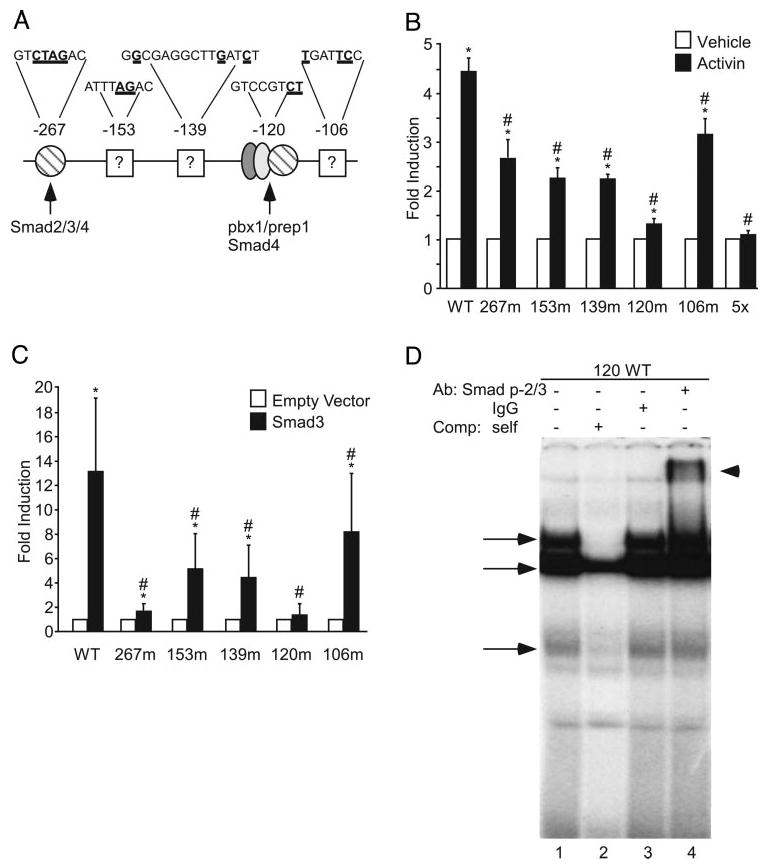Fig. 4.

Multiple sites on the FSHβ promoter contribute to activin induction. A, Sites on the FSHβ promoter that contribute to activin responsiveness of the FSHβ gene are denoted. Numbers above the promoter indicate the location of each regulatory element relative to the transcriptional start site. Nucleotides in bold and underlined indicate bases mutated in subsequent transfection experiments. Proteins binding each site are indicated or, if unknown, are denoted with a question mark. B, The wild-type −1000FSHβluc reporter gene or one of six mutants was transiently transfected into LβT2 cells with TKβgal. After overnight starvation in serum-free media, the cells were treated for 24 h with either vehicle (white bars) or 10 ng/ml activin (black bars). *, Hormone treatment significantly different from the vehicle-treated control of the same reporter gene, using Student's t test; #, induction of the mutant reporter gene is significantly different from the induction of the wild-type reporter gene, using one-way ANOVA followed by Tukey's post hoc test. C, The wild-type −1000FSHβluc reporter gene or one of five mutated reporters (with TKβgal) was transiently transfected into LβT2 cells along with either empty vector (white bars) or 200 ng Smad3 (black bars). *, Smad3 induction significantly different from the empty vector control of the same reporter gene, using Student's t test; #, induction of the mutant reporter gene is significantly different from the induction of the wild-type reporter gene, using one-way ANOVA followed by Tukey's post hoc test. D, Nuclear extracts from LβT2 cells were incubated with the −120 probe and tested for complex formation in EMSA. Arrows denote specific complexes that are competed with the addition of 500× unlabeled competitor (lane 2). Inclusion of a nonspecific IgG antibody does not disrupt any complexes (lane 3); however, addition of an antibody specific for phosphorylated Smad2/3 (lane 4) results in a supershift (arrowhead).
